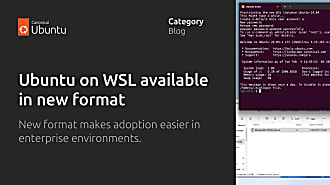Adam Szopa
on 21 October 2022
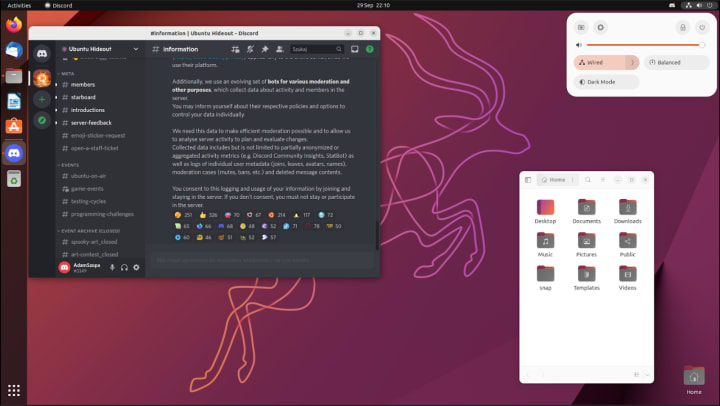
Ubuntu Desktop 22.10, codenamed Kinetic Kudu, is here! This is the first release after Ubuntu 22.04 LTS, which means that there are a number of changes in both the underlying technology and the user experience, as well as some previews of what might be on the horizon in future releases.
Excited? Let’s jump straight into our highlights.
New GNOME

The desktop environment has been fully updated to GNOME 43 which delivers new ways to interact with your device, helping you achieve your tasks faster and customise your experience. GNOME 43 provides stylish updates to the file manager, which now dynamically changes its layout based on the window size. The general look and feel of the app was also improved, with the list view getting a new look.
Quick Settings
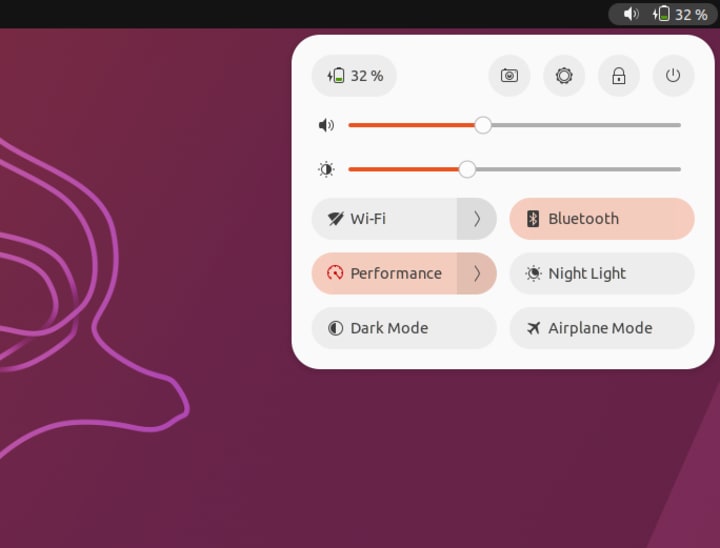
The status menu has been redesigned to allow faster access to the most common settings. Now you can change Wi-Fi settings, toggle Dark Mode, switch audio devices and more, with fewer clicks.
Spread effect is back!
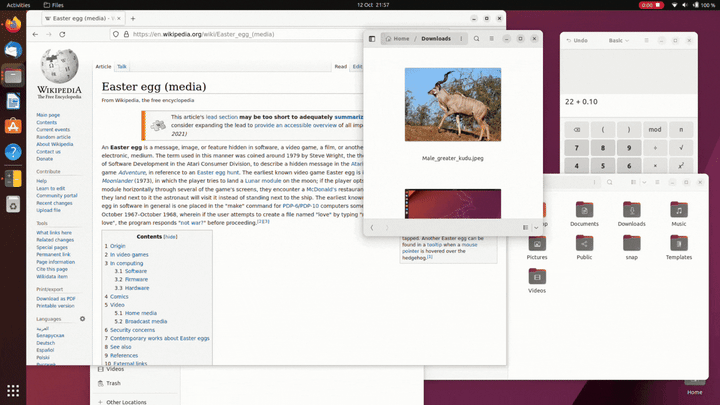
Fans of the Unity desktop might remember the spread effect: it shows all open windows of the same app when clicking on its icon in the dock. No need to keep reminiscing, as the feature is back in Ubuntu 22.10! Now, instead of a list of thumbnails, you’ll see a spread effect of high-resolution window previews.
If you are happy that this effect from the Unity desktop is back, you’ll be pleased to know Ubuntu Unity is now an official flavour!
New official flavour
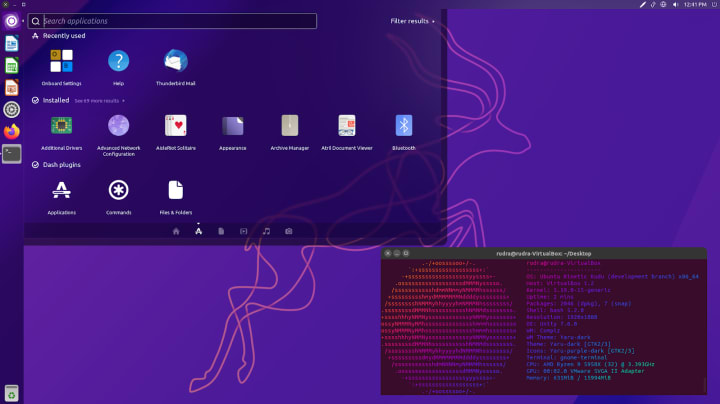
Those heartbroken after the Unity desktop breakup can rejoice again: Unity is back as an official Ubuntu flavour and wants to see you again.
Ubuntu Unity is a beautiful, slick and lightweight Ubuntu flavour. It focuses on beautiful design, and an efficient and elegant workflow. It promises “unparalleled level of efficiency” with features like the heads-up display (HUD), the Global Menu and powerful search.
Official flavours are owned and developed by members of the global community, but get backing from Canonical for infrastructure and support. The same repositories that are used on Ubuntu are also available in official flavours. Learn more at the Unity blog.
New Tech
Kinetic Kudu brings toolchain updates for Ruby 3.1, Go 1.19, GCC 12.2 and Rust 1.61. Being the first release after an LTS, Ubuntu 22.10 is ready to deliver some bigger changes as well:
PipeWire
While also present in previous releases for video sharing in the Wayland session, Ubuntu 22.10 now defaults to PipeWire as the audio system. Expect better performance and more compatibility, particularly with modern Bluetooth devices. Test them out using the new quick settings!
Snappier performance
Kinetic Kudu ships with Kernel 5.19 and is configured to enable multi-threaded CPU decompression for squashfs. This will improve snap startup times on some devices. On the subject of snaps performance, you can read our series focusing on Firefox to learn about the improvements we have shipped so far. Keep an eye out for Part 4 coming soon!
Gaming
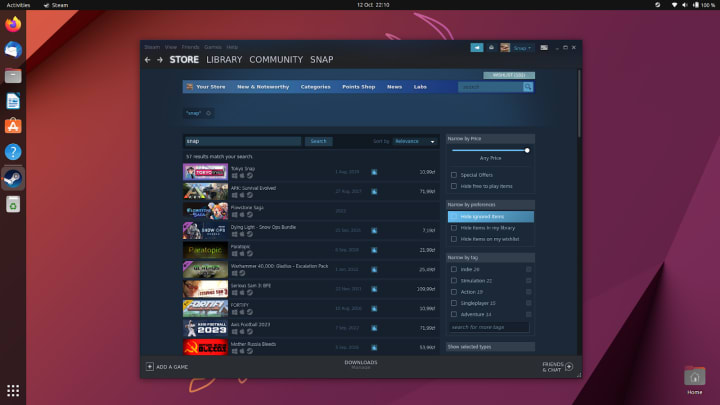
Gamers who use tools like Wine or Proton will be happy to learn that the Kernel in Ubuntu 22.10 has the new futex_waitv()syscall enabled, which should result in performance gains. The version of Mesa shipped is at version 22.2 – but if you’re using the Steam snap the latest Mesa drivers are bundled, ensuring that you’re always up to date regardless of your host OS.
This is just the start of the additional features we’re building into the Steam snap. For a deep dive into what’s new and what’s coming, check out our latest progress update.
Coming soon to Ubuntu Desktop
As a reward for reaching the end of the blog post, here’s a quick look at some of the things that are coming to Ubuntu Desktop in future releases, that you can also check out today.
New desktop installer
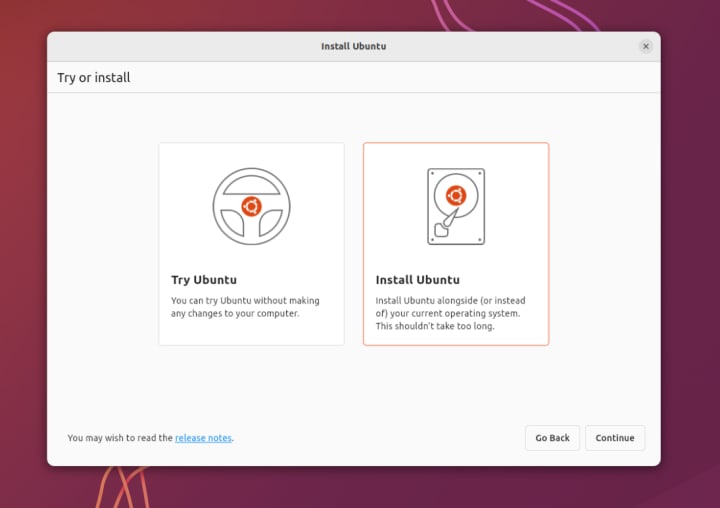
Our shiny new desktop installer is still in development but, like previous releases, there is an alternative build of Ubuntu 22.10 available for those looking to test it out.
The new installer uses Subiquity, the same technology used on Ubuntu Server, with a Flutter-based UI. Consolidating the installer for server and desktop on common technologies will mean we can deliver a consistent, robust, installation experience across the Ubuntu family and focus our efforts on maintaining a single code base.
The main update for Ubuntu 22.10 is improved partitioning support and we’d like as many users as possible to test it out and provide feedback on the flow and functionality.
Download the Canary ISO to try it out and share your thoughts in the Ubuntu Discourse.
The future of Ubuntu Software
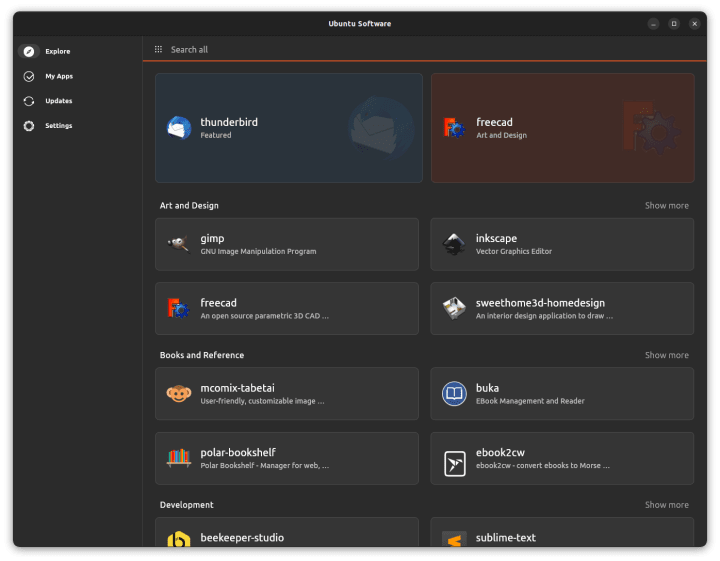
Some Ubuntu detectives may have noticed that a popular community project building a Flutter-based App store has become available in our official snap-store preview channel. Indeed, we are now actively collaborating with Frederik Feichtmeier and the Ubuntu Flutter community to make this version the default store experience in a future Ubuntu release.
This version of the store is under very active development, and your feedback is invaluable. Please check out the community repository on GitHub, or test it on your current system using these commands:
killall snap-store
snap refresh snap-store --channel= preview/edge
Are you interested in creating your own Flutter-based apps? Check out the blog post announcing stable Linux support that landed in Flutter 3.
Get started today
Ubuntu 22.10 is available to download here. If this is your first time installing Ubuntu, check out our handy tutorial for a walkthrough on how to get started.
To upgrade from Ubuntu 22.04 LTS, go to the “Software and Updates” app and set the last option in the “Updates” tab to “For any new version”.
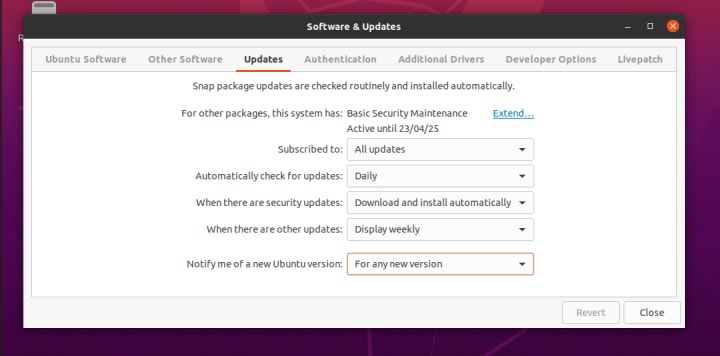
You will be notified when the update is ready, or you can run the “Software Updater” app immediately.

If you prefer the command line route, simply run:
sudo apt update
sudo apt upgrade
sudo do-release-upgrade
More resources
See how to upgrade from Ubuntu 22.04 LTS



